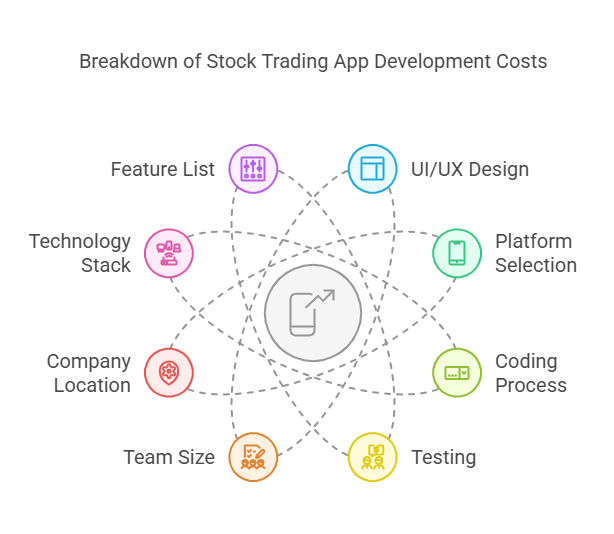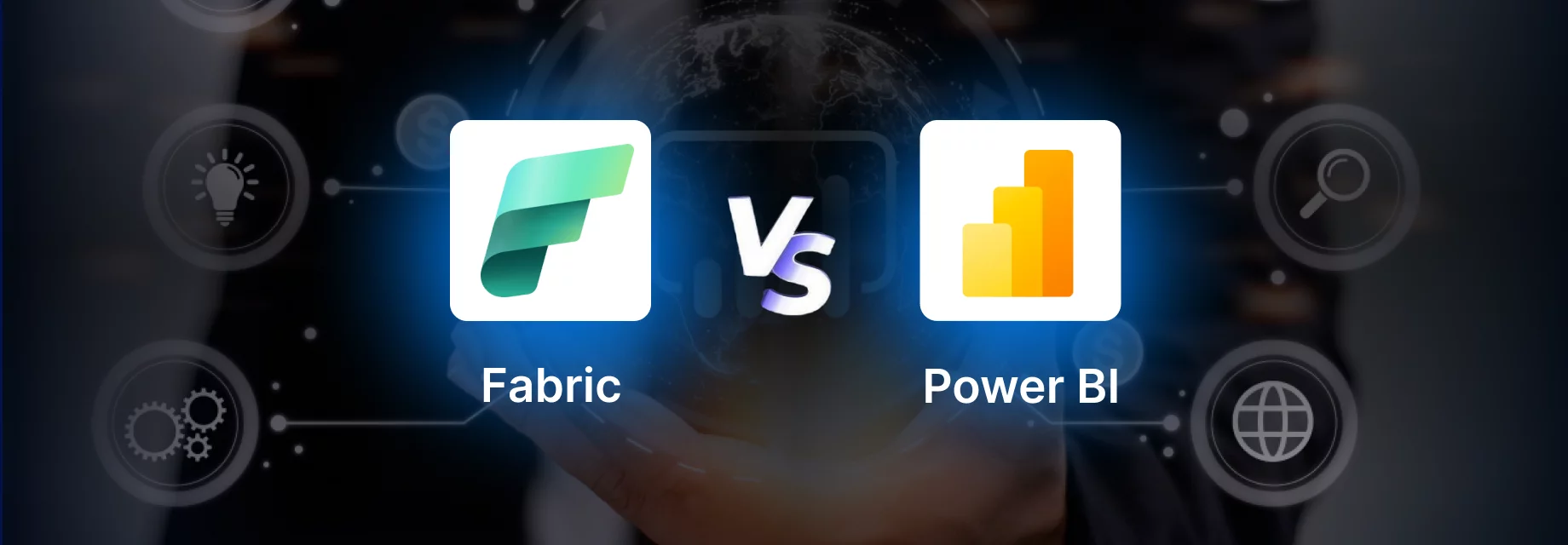Investors no longer need to rely on stock exchange agents to invest in financial markets. With the rise of stock trading apps, buying and selling stocks is now just a matter of a few clicks. These apps keep users informed about stock movements in real time and enable them to trade without intermediaries. This ease of use has attracted both investors and firms who are eager to make trading a seamless experience for everyone. As an experienced app development company in this article, we will guide you through understanding the cost of stock trading app development and the various factors that influence it. Additionally, we will explore how such apps function and generate revenue.
Stock Trading App Market Overview
A stock trading app is a cloud-based platform commonly used to buy, sell, and manage stocks. With just a smartphone and a fast internet connection, users can start trading with ease at the press of a few buttons. According to Statista, the global online trading market is expected to grow at a compound annual growth rate (CAGR) of 6.4%, reaching an estimated value of $13.3 billion by 2026.
These projections highlight why it’s important for entrepreneurs to consider investing in stock trading app development. Given the evolving market trends, this is an ideal time to enter the industry and tap into the significant advantages of developing a stock trading app.
Understanding the Stock Trading App Development Cost
Several factors influence the stock trading app development cost, including the stock app development services like developers’ hourly rates, the app’s UI/UX design, its coding process, and the platform on which it will be built, among others. Determining the exact cost of stock trading app development can be a challenging task, and it often requires the expertise of a specialized stock trading app development company to guide you through the details and provide accurate estimates tailored to your business needs.
The complexity of the app plays a key role in estimating stock trading app development cost. For example, a highly intricate app with numerous features will typically be more expensive than a simpler one with basic functionality. Here’s a rough estimate of the cost and timeline for developing stock trading apps, considering the features involved.
| Stock Trading App Type | Estimated Cost | Time Frame |
|---|---|---|
| Basic App (MVP) | 15,000 to 20,000$ | 5+Months |
| With Moderate Features | 20,000 to 100,000$ | 6-7+ Months |
| With Advance Features | 100,000 to 200,000$ | 9+ Months |
Factors that Affect the Cost of Stock Trading App Development
The following factors of stock app development services influence the cost of developing a new stock trading app, offering a clearer understanding of what goes into determining the overall app development cost.
1. UI /UX Design
A stock trading app can benefit from a simplistic and clear design, but incorporating micro-interaction elements, which are not commonly found in other information-heavy applications, can enhance the user experience. These elements can increase the development cost. Additionally, features like push notifications, icons, and customization are essential for making a lasting impression on users. A well-designed app encourages users to engage more and helps prevent them from losing interest over time.
2. Platform Selection
A stock trading application should ideally be available on both Android and iOS. However, launching your app on multiple platforms will increase development costs. It’s more cost-effective to start with one platform and expand to others later. This approach allows you to minimize expenses during the early stages, and once the app proves successful, you can extend it to additional platforms.
3. Coding Process
The frontend and backend of the application will have the greatest impact on the cost of developing a stock trading app. These costs will largely depend on the technologies and frameworks chosen. When it comes to the backend, there are two main approaches: Monolithic and Microservice. While the Monolithic approach is more cost-effective, the Microservice backend offers the potential for long-term growth and scalability, making it a better choice for a highly scalable application.
4. Testing
Testing an application that handles real-time financial transactions typically involves significant costs. Several factors and strategies need to be considered during testing, including ensuring the app functions correctly when the market is open, verifying that all APIs are performing as expected, and confirming that synchronization is smooth and efficient.
5. Team size
The cost of developing your stock trading app will also be influenced by the size of the team you assemble. If you outsource the project to a reputable stock trading app development company with expertise across various domains, they will provide skilled resources and deliver high-quality services. Compared to hiring freelancers or building an in-house team, outsourcing to a professional organization ensures that service quality is maintained and accelerates the development process.
6. Company Location
The location of the app development company can significantly affect the cost of developing a stock trading app. For example, development rates in regions like Asia are typically lower than those in the UK or US. Therefore, understanding regional pricing trends is essential for making informed decisions about your development budget.
7. Technology Stack
The tech stack you select for developing stock trading apps plays a crucial role in determining the overall development budget. An investment app built on a strong tech stack with modern technologies will help you stand out and gain traction in this highly competitive market. The right technology can also improve the app’s performance, scalability, and security, ensuring long-term success.
8. Feature List
The development cost of a stock trading app is heavily influenced by the features it offers. While more advanced features may increase the overall expense, they can significantly enhance the app’s appeal and user experience. A well-rounded feature set not only boosts functionality but also gives the app a competitive edge in the crowded market.
Must Have Stock Trading App Features
When building a stock trading app, selecting the right features is essential, as they shape the app’s functionality. It’s important to focus on features that enhance the user experience and make the app easy to navigate. Below are some must-have features for your mobile app & you should consult for these with your stock app development company.
1. Dashboard
The dashboard serves as the central hub for all essential information an investor needs, such as order status, watchlist, balance, charts, and holdings. Given the abundance of data displayed on this screen, it’s crucial to present it in a way that avoids overwhelming the user with too much information at once.
2. Portfolio
This feature allows investors to create and manage their portfolios independently, without the need for third-party assistance. To enhance usability, adding filter and sort options will help investors quickly locate specific items in their portfolio. Furthermore, integrating performance tracking tools can provide valuable insights into the portfolio’s growth and help users adjust their strategies accordingly.
3. Latest market data
The app should provide up-to-date market insights to keep investors informed about their stock performance and highlight trending stocks in the market. Incorporating AI-powered stock trading can add further value by offering trend forecasting and predictive analysis, helping users make more informed decisions.
4. Stock Trading Functionality
Stock trading is the central feature of any stock trading app. This is the function that users will engage with most frequently. Ensuring a smooth and seamless experience for holding, buying, and selling stocks is crucial to making the process hassle-free for investors.
5. Latest market data
The app should provide up-to-date market insights to keep investors informed about their stock performance and highlight trending stocks in the market. Incorporating AI-powered stock trading can add further value by offering trend forecasting and predictive analysis, helping users make more informed decisions.
6. Stock Trading Functionality
Stock trading is the main feature of any stock trading app. This is the feature that users will engage with most frequently. Ensuring a smooth and seamless experience for holding, buying, and selling stocks is crucial to making the process hassle-free for investors. Additionally, integrating real-time updates and transaction confirmations can further enhance user confidence and trust in the platform.
7. Fund Transfer
This feature allows users to transfer funds from their accounts into the app for stock trading purposes. Special attention should be given to ensuring the development of a highly secure platform, providing users with a safe and reliable way to transfer funds in real time.
8. Watchlist
To help investors keep track of stocks they are interested in, the app should include a watchlist feature. This will allow users to easily monitor selected stocks without having to search for them individually each time they access the app.
Selecting The Best Stock Trading App Development Company
We hope this article provided valuable insights into the cost of developing a stock trading app. Building a free stock trading app requires skilled developers who provides best stock app development service to tackle technical challenges and ensure the app runs smoothly and reliably. If you’re considering stock trading app development, it’s recommended to consult with a best stock trading app development company like Intelegain.
Our team of expert app developers has extensive experience in the technologies needed to create high-quality stock trading apps. With our custom stock trading app development services, we can help your business achieve digital innovation. Contact us today for free consultation!
FAQ
How do stock trading apps generate revenue?
Stock trading apps can generate revenue through transaction fees, subscription models, premium features, margin lending, and selling market data or other services to users.
How does a stock market app operate?
Stock trading apps work similarly to other fintech apps by linking to a bank account for fund deposits. Users can then use the app to buy and sell financial assets. These apps connect users to major exchanges, allowing them to trade stocks, options, ETFs, and cryptocurrencies.
How much does it cost to build a trading app?
The cost to develop a stock trading app varies depending on the features. For a basic app (MVP), it ranges from $15,000 to $20,000. With moderate features, the cost is between $20,000 and $100,000. For advanced features, the cost can range from $100,000 to $200,000.
How long does it take to develop a stock trading app?
The timeline depends on the complexity of the app. A basic version can take around 4 to 6 months, while a fully featured app with advanced tools, real-time data, and integrations can take 6 to 12 months.












